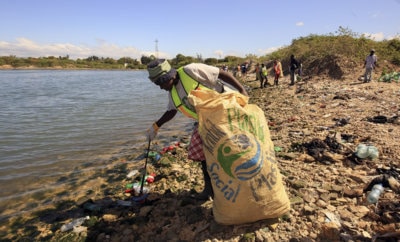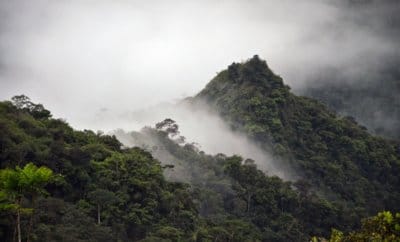Life
Hurricane, Typhoon or Cyclone? Same Storm, Different Name

Photo Credit: Bigstock
What makes a storm a hurricane, a typhoon or a cyclone? It comes down to location.
Hurricane Florence is bearing down on the eastern United States. A powerful typhoon, Jebi, tore through Japan last week, and another one, brewing in the Pacific, is headed for the Philippines and Taiwan. Earlier this year, Cyclone Mekunu killed more than 30 people in Yemen and Oman.
What makes a storm a hurricane, a typhoon or a cyclone? It comes down to location. They all refer to tropical cyclones — low-pressure circular storm systems with winds greater than 74 mph that form over warm waters — but different terms are used in different parts of the world.
The word “hurricane” is used for tropical cyclones that form in the North Atlantic, northeastern Pacific, the Caribbean Sea and the Gulf of Mexico. Typhoons are storms that develop in the northwestern Pacific and usually threaten Asia.
The international date line serves as the Pacific Ocean’s dividing marker, so when a hurricane crosses over it from east to west, it becomes a typhoon instead, and vice versa.
The same storms in the Southern Hemisphere are easier to keep straight. In the Bay of Bengal or Arabian Sea, both in the northern Indian Ocean, they are simply called “cyclones.” In the southern Indian Ocean and South Pacific, they are “tropical cyclones” or “severe tropical cyclones.”
All these storms exist to move heat energy from the tropics toward the poles, helping to regulate climate.
Seasonal differences for storms
Aside from having different names, hurricanes, typhoons and cyclones also have different seasons. This year’s Atlantic hurricane season officially runs from June 1 to Nov. 30. The Pacific season started slightly earlier. Typhoons can form year-round but are most common from May to October. The cyclone season in the South Pacific will begin on Nov. 1 and end on April 30.
In the southern Indian Ocean, the season begins two weeks later and ends at the same time except in Mauritius and the Seychelles, where it ends on May 15. Cyclones are concentrated from May to November in the northern Indian Ocean, which has no official season.
Whatever they’re called, tropical cyclones generally become weaker after they arrive on land, since they draw their energy from the evaporation of water in the oceans below them. But they can make it quite far past the coast and wreak havoc through wind damage, torrential rains, flooding and storm surges.
Tropical cyclones around the world are named according to a list maintained by the World Meteorological Organization. The names of the deadliest storms, like Typhoon Haiyan or Hurricane Katrina, are retired.
Grading a storm’s intensity
Hurricanes are categorized 1 to 5 according to the Saffir-Simpson scale, which is based on wind speed. According to the National Hurricane Center, storms in Category 3 or higher, which have wind speeds of at least 111 mph, “are considered major hurricanes because of their potential for significant loss of life and damage.” (Florence was a Category 4 as of early Wednesday.)
Typhoons are monitored by the Japan Meteorological Agency, which classifies them as “typhoon,” “very strong typhoon” or “violent typhoon,” depending on sustained wind speeds. Storms with wind speeds of less than 74 mph are labeled “tropical depressions,” “tropical storms” or “severe tropical storms.”
The Joint Typhoon Warning Center, a U.S. military command in Pearl Harbor, Hawaii, also issues storm advisories using the designations “tropical depression,” “tropical storm,” “typhoon” and “super typhoon.”
Typhoon Jebi, which killed 11 people in Japan, was this season’s third super typhoon, meaning a typhoon with sustained surface winds of at least 150 mph. It is the equivalent of a Category 4 or 5 hurricane in the Atlantic. This week, Southeast Asia and southern China are bracing for Super Typhoon Mangkhut.
Cyclones in the Indian Ocean are classified according to two intensity scales depending on where they are, with names like “very intense tropical cyclone” and “super cyclonic storm.” Australia rates cyclones from categories 1 to 5.
So why the three different words? Storm terminology has been highly influenced by the histories and cultural interactions of different regions. “Hurricane” appeared in English in the 16th century as an adaptation of the Spanish “huracán.”“Typhoon” is variously described as coming from Arabic (“tafa”)or Chinese (“taifeng”), perhaps both. “Cyclone” was coined in the late 18th century by a British official in India, from the Greek for “moving in a circle.”
But a storm by any other name should still be taken seriously.
© New York Times 2018




You must be logged in to post a comment Login